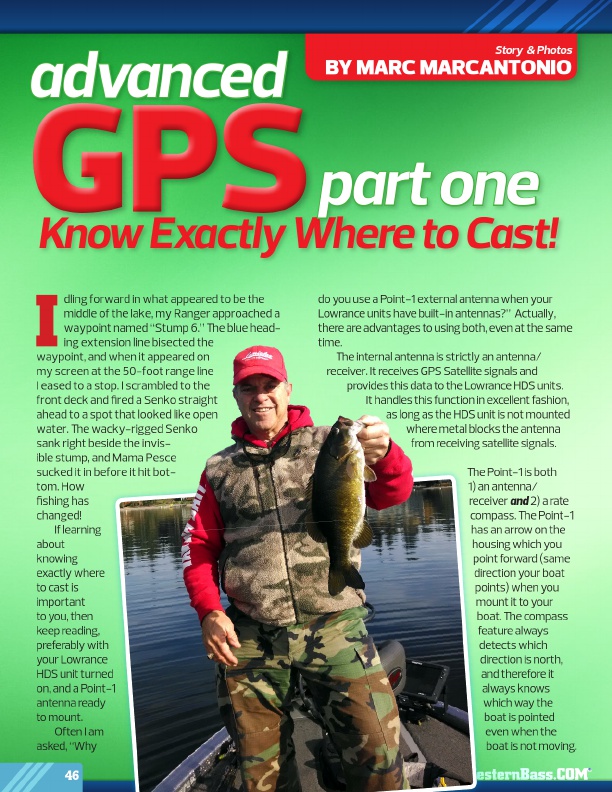
G P S
advanced
part one
Story & Photos
BY MARC MARCANTONIO
Know Exactly Where to Cast!
I
dling forward in what appeared to be the
middle of the lake, my Ranger approached a
waypoint named “Stump 6.” The blue head-
ing extension line bisected the waypoint, and when it appeared on
my screen at the 50-foot range line
I eased to a stop. I scrambled to the
front deck and fired a Senko straight
ahead to a spot that looked like open
water. The wacky-rigged Senko
sank right beside the invis-
ible stump, and Mama Pesce
sucked it in before it hit bot-
tom. How
fishing has
changed!
If learning
about
knowing
exactly where
to cast is
important
to you, then
keep reading,
preferably with
your Lowrance
HDS unit turned
on, and a Point-1
antenna ready
to mount.
Often I am
asked, “Why
46
do you use a Point-1 external antenna when your Lowrance units have built-in antennas?” Actually, there are advantages to using both, even at the same time.
The internal antenna is strictly an antenna/
receiver. It receives GPS Satellite signals and
provides this data to the Lowrance HDS units.
It handles this function in excellent fashion,
as long as the HDS unit is not mounted
where metal blocks the antenna
from receiving satellite signals.
The Point-1 is both 1) an antenna/ receiver and 2) a rate compass. The Point-1 has an arrow on the housing which you point forward (same
direction your boat
points) when you
mount it to your
boat. The compass
feature always
detects which
direction is north,
and therefore it
always knows
which way the
boat is pointed
even when the
boat is not moving.
®